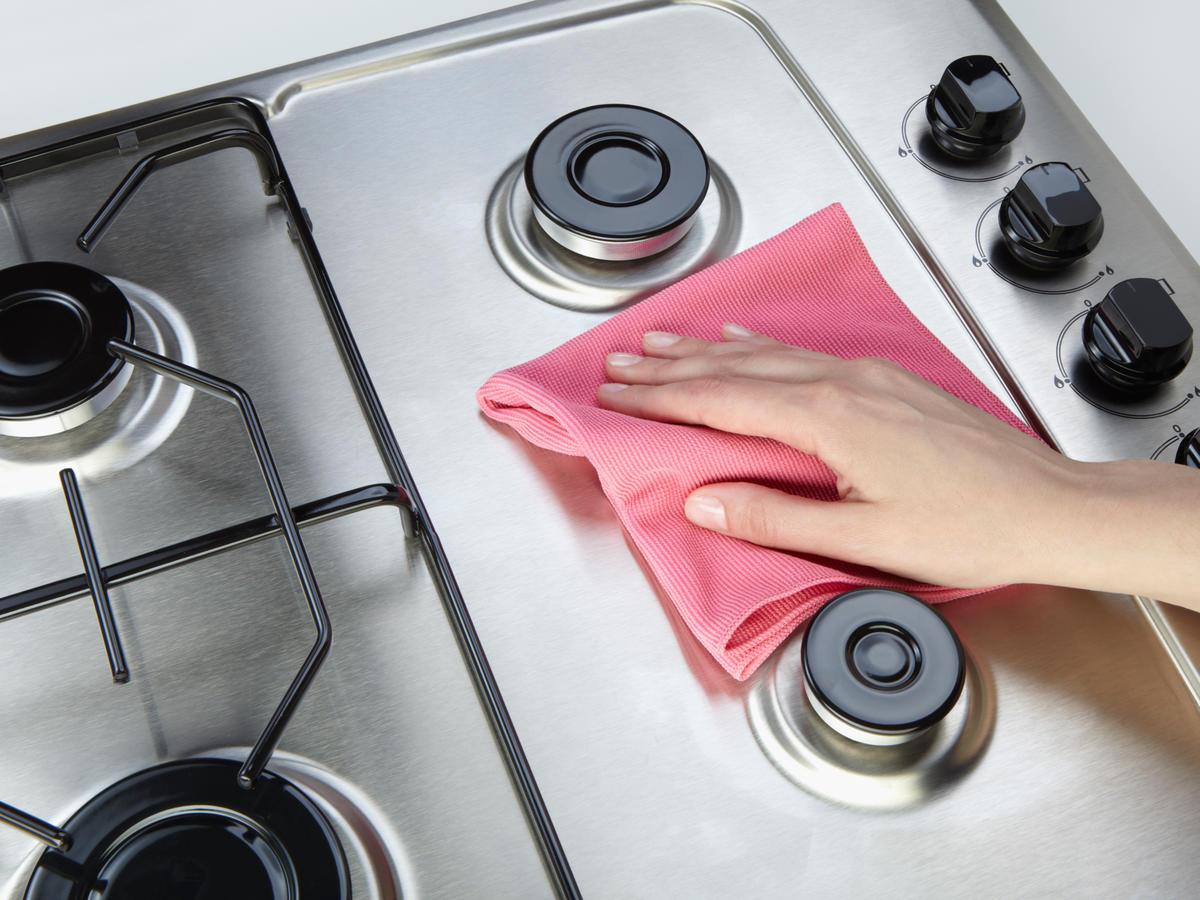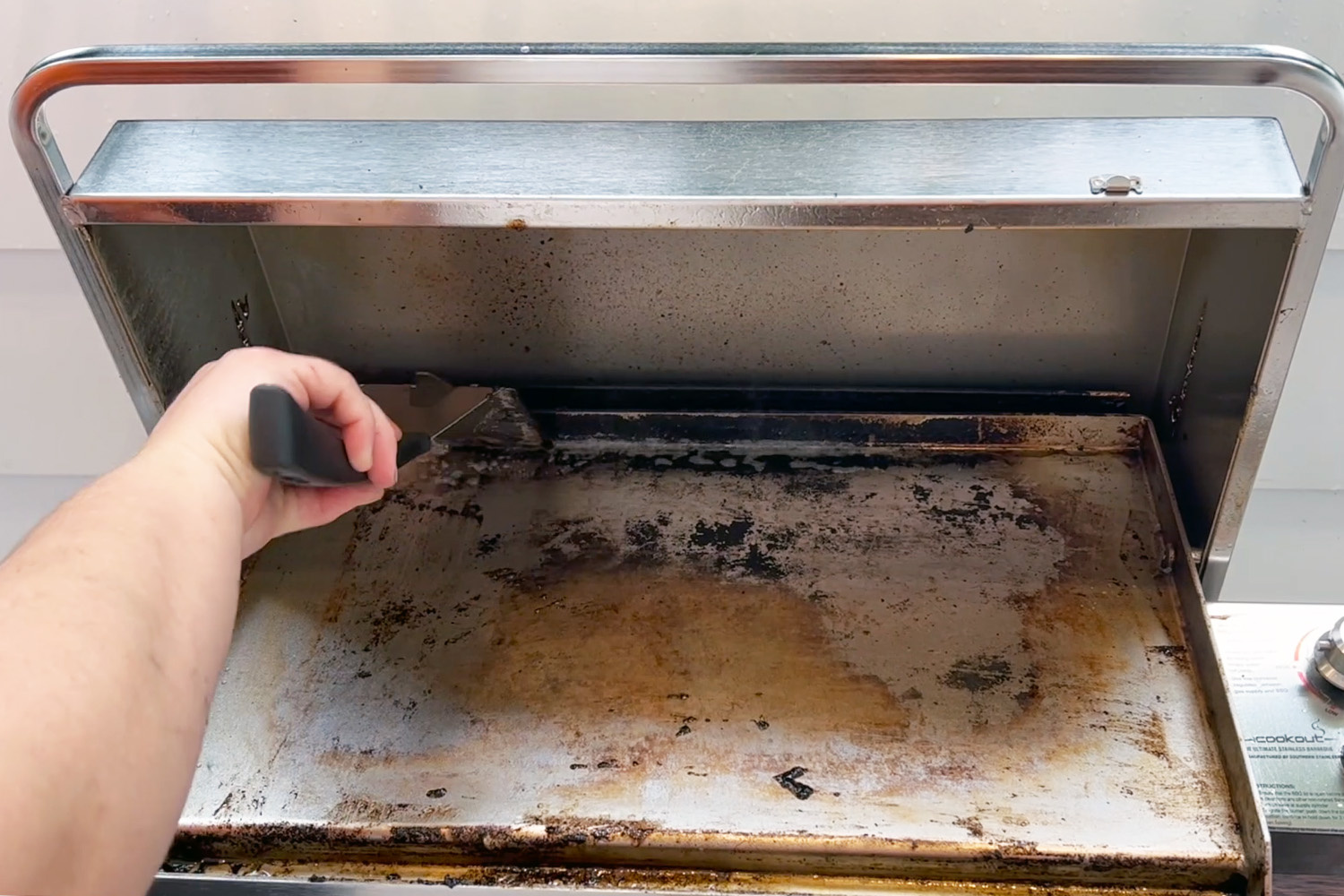Cleaning stainless steel cooktops can be a daunting task, but it doesn’t have to be. With the right methods and a little elbow grease, you can keep your cooktop looking its best for years to come. In this guide, we’ll provide you with everything you need to know about cleaning stainless steel cooktops, from the best cleaning methods to tips for preventing damage and maintaining the shine.
Stainless steel cooktops are a popular choice for many homeowners because they are durable, easy to clean, and add a touch of elegance to any kitchen. However, stainless steel can also be prone to scratches, discoloration, and rust if not properly cared for.
By following the tips in this guide, you can keep your stainless steel cooktop looking its best for years to come.
Methods for Cleaning Stainless Steel Cooktops
Maintaining the pristine condition of your stainless steel cooktop requires regular cleaning and proper techniques. Here’s a comprehensive guide to various cleaning methods, their effectiveness, and potential drawbacks:
Commercial Cleaning Solutions
Commercial cleaning solutions are specifically formulated to remove tough stains and grease from stainless steel surfaces. They are readily available and easy to use, but some may contain harsh chemicals that can damage the finish if not used as directed.
- Stainless Steel Cleaners:These cleaners are designed to clean and polish stainless steel surfaces, leaving a streak-free shine. They are effective in removing fingerprints, smudges, and light grease.
- Degreasers:Degreasers are heavy-duty cleaners that effectively dissolve grease and oil buildup. They are ideal for cleaning heavily soiled cooktops, but prolonged use can dull the surface.
- Glass Cleaners:Glass cleaners can be used to clean stainless steel surfaces, but they may not be as effective in removing grease and stains. They are best suited for light cleaning and daily maintenance.
Homemade Cleaning Solutions
Homemade cleaning solutions offer a more natural and budget-friendly alternative to commercial products. They are generally safe and gentle on stainless steel surfaces, but their effectiveness may vary depending on the severity of the stains.
- Baking Soda Paste:A paste made from baking soda and water is an effective stain remover. It gently abrades the surface, removing dirt and grime without scratching.
- White Vinegar Solution:White vinegar is a natural disinfectant and degreaser. A solution of equal parts vinegar and water can be used to clean and disinfect stainless steel surfaces.
- Olive Oil:Olive oil can be used to polish and protect stainless steel surfaces. It creates a protective barrier that repels dirt and fingerprints.
Other Cleaning Methods
In addition to chemical cleaners, there are several other effective methods for cleaning stainless steel cooktops:
- Steam Cleaning:Steam cleaning is a gentle and effective method that uses hot steam to dissolve grease and grime. It is ideal for cleaning delicate surfaces without the use of harsh chemicals.
- Microfiber Cloths:Microfiber cloths are non-abrasive and highly absorbent, making them ideal for cleaning stainless steel surfaces. They effectively remove fingerprints, smudges, and dust without scratching.
- Magic Eraser:Magic Erasers are made of melamine foam that gently abrades the surface, removing stains and dirt. They are effective for removing tough stains, but should be used with caution as prolonged use can damage the finish.
Preventing Damage to Stainless Steel Cooktops
Stainless steel cooktops offer a sleek and modern look to any kitchen. However, it is important to take proper care of these surfaces to prevent damage and maintain their appearance. Common types of damage include scratches, discoloration, and rust, which can occur due to various factors.
Scratches
Scratches can be caused by using abrasive cleaning tools, such as steel wool or scouring pads. To prevent scratches, use only soft cloths or sponges when cleaning your cooktop. Avoid using sharp objects or knives directly on the surface.
Discoloration
Discoloration can occur due to heat, spills, or improper cleaning. To prevent discoloration, clean spills immediately and avoid using harsh chemicals or cleaners. Use a specialized stainless steel cleaner to remove stubborn stains and restore the original shine.
Rust
Rust is caused by exposure to moisture and oxygen. To prevent rust, keep your cooktop dry and wipe up any spills or condensation promptly. Avoid using acidic cleaners, as they can damage the protective layer on the stainless steel.
By following these tips and practicing proper maintenance, you can extend the life of your stainless steel cooktop and keep it looking its best.
Maintaining the Shine of Stainless Steel Cooktops

Maintaining the shine of your stainless steel cooktop requires regular cleaning and maintenance. By following the techniques Artikeld below, you can restore and preserve the luster of your cooktop, ensuring it remains a beautiful and functional addition to your kitchen.
Using Cleaning Products and Polishing Cloths
- Cleaning Products:Use a mild, non-abrasive cleaner specifically designed for stainless steel surfaces. Avoid using harsh chemicals or abrasive cleaners, as these can damage the finish.
- Polishing Cloths:Use a soft, microfiber cloth or a non-abrasive sponge for polishing. Avoid using abrasive materials such as steel wool or scouring pads, as these can scratch the surface.
Frequency of Cleaning and Maintenance, Cleaning stainless steel cooktop
The frequency of cleaning and maintenance required depends on how often you use your cooktop. For regular use, it is recommended to clean the cooktop after each use. For less frequent use, weekly or bi-weekly cleaning is sufficient. In addition to regular cleaning, periodic polishing can help maintain the shine and prevent scratches.
Troubleshooting Common Issues with Stainless Steel Cooktops
Stainless steel cooktops offer durability and a sleek aesthetic, but they are not immune to wear and tear. Discoloration, scratches, and stubborn stains can arise over time, affecting the appearance and performance of your cooktop. This guide provides troubleshooting tips to resolve these common issues, ensuring your stainless steel cooktop remains in pristine condition.
Discoloration
- Cause:Heat, spills, or improper cleaning can cause discoloration.
- Solution:Use a stainless steel cleaner specifically designed to remove discoloration. Follow the manufacturer’s instructions carefully.
Scratches
- Cause:Abrasive materials or sharp objects can scratch the surface.
- Solution:For minor scratches, use a stainless steel polish or a mixture of baking soda and water. Apply gently with a soft cloth in the direction of the grain.
- For deep scratches, consult a professional:They may use specialized equipment to repair the surface.
Stubborn Stains
- Cause:Food residue, grease, or hard water can leave stubborn stains.
- Solution:Try a commercial stainless steel cleaner or create a paste of baking soda and water. Apply to the stain and let it sit for a few minutes before wiping clean.
- For tough stains, use a degreaser:Follow the manufacturer’s instructions and rinse thoroughly.
Ending Remarks

Cleaning stainless steel cooktops doesn’t have to be difficult. By following the tips in this guide, you can keep your cooktop looking its best for years to come. With a little elbow grease and the right cleaning methods, you can keep your stainless steel cooktop sparkling and free of scratches, discoloration, and rust.
